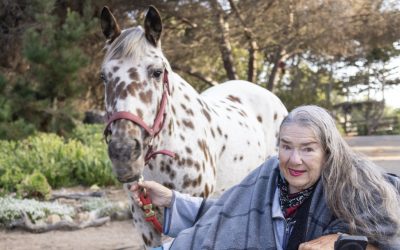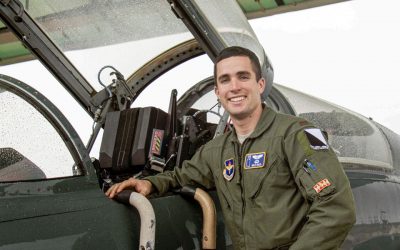Four years after his one-hour train stop and tour in the small Central Coast county seat of San Luis Obispo (about 3,500 residents), President Theodore Roosevelt stood aboard the presidential yacht, the Mayflower, in early December 1907 obviously delighted at the sight. “Did you ever see such a fleet? Isn’t it magnificent? Oughtn’t we all feel proud?” Preferring the title Colonel—never Teddy—from his days as a Rough Rider in Cuba, he reviewed the 16 vessels embarking on a 14-month, 43,000-mile trip. An enthusiastic advocate of the navy, when a student at Harvard, he wrote The Naval War of 1812, a well-researched book still in print. A prolific writer throughout his eclectic political career, he also served as Under Secretary of the Navy under President William McKinley a decade earlier. While a Nobel Peace Prize recipient the previous year, America’s preparedness for conflict was sailing on display to six continents. The floating armada returned just a few days before Roosevelt left office. An intrepid adventurer, he was also the first Chief Executive to submerge in a submarine as well as the first to fly.
Today, the nuclear-powered U. S. S. Theodore Roosevelt honors the 26th president.
When the journey was finally completed in late February 1909, the Great White Fleet known for the hull coloration had even paid a visit to the “one grand amphitheater” of San Luis Bay. An ecstatic newspaper article of April 30, 1908, reported thousands watched the flotilla, led by the flagship the U. S. S. Connecticut, slowly sail past from three miles offshore. Presenting a full broadside to the crowds, the sight “certainly was grand.” “It was the greatest day in the history of Avila,” exclaimed the writer as the Pacific Coast Railway brought two thousand to the spectacle and an unknown number of vehicles caused an “unbroken line” from El Pismo to the harbor. “It was a day never to be forgotten,” ended the news account, but even more memorable days were ahead.
Today, the nuclear-powered U. S. S. Theodore Roosevelt honors the 26th president.
When the journey was finally completed in late February 1909, the Great White Fleet known for the hull coloration had even paid a visit to the “one grand amphitheater” of San Luis Bay. An ecstatic newspaper article of April 30, 1908, reported thousands watched the flotilla, led by the flagship the U. S. S. Connecticut, slowly sail past from three miles offshore. Presenting a full broadside to the crowds, the sight “certainly was grand.” “It was the greatest day in the history of Avila,” exclaimed the writer as the Pacific Coast Railway brought two thousand to the spectacle and an unknown number of vehicles caused an “unbroken line” from El Pismo to the harbor. “It was a day never to be forgotten,” ended the news account, but even more memorable days were ahead.
Some dozen years later, other naval vessels did more than sail by the region. The ships stopped, invited everyone aboard and all enjoyed a few days celebrating the unofficial holiday known as Navy Day.
Here’s the story.
Founded in 1902 as a private organization (with encouragement from President Roosevelt) and continuing an active presence today, the Navy League of the United States in 1922 chose Roosevelt’s birthday, October 27, as the date for a national observance. President Warren G. Harding (1921-1923) wrote: “It is well for us to have in mind that under a program of lessening naval armaments, there is a greater reason for maintaining the highest efficiency, fitness, and morale in this branch of the national defensive service.” Harding was referring to international politics attempting to lessen the chance for war by downsizing the military’s size. This in sharp contrast to Roosevelt’s famous quote of “Speak softly and carry a big stick” demonstrated by the Great White Fleet.
The next year, Mayor Louis F. Sinsheimer received a letter advising him the destroyers Mullany and J. F. Burnes would stop at Avila and everyone —including children—was invited to tour the vessels. Sinsheimer appointed a committee headed by attorney and former mayor William T. Shipsey (1898-1902) to arrange an appropriate welcome. Among other activities, the officers and “gobs” were invited to a dance at the Winter Garden. The location was probably the Pavilion under one of its many titles. The same ships would return the next month to celebrate Armistice Day in Santa Maria.
Here’s the story.
Founded in 1902 as a private organization (with encouragement from President Roosevelt) and continuing an active presence today, the Navy League of the United States in 1922 chose Roosevelt’s birthday, October 27, as the date for a national observance. President Warren G. Harding (1921-1923) wrote: “It is well for us to have in mind that under a program of lessening naval armaments, there is a greater reason for maintaining the highest efficiency, fitness, and morale in this branch of the national defensive service.” Harding was referring to international politics attempting to lessen the chance for war by downsizing the military’s size. This in sharp contrast to Roosevelt’s famous quote of “Speak softly and carry a big stick” demonstrated by the Great White Fleet.
The next year, Mayor Louis F. Sinsheimer received a letter advising him the destroyers Mullany and J. F. Burnes would stop at Avila and everyone —including children—was invited to tour the vessels. Sinsheimer appointed a committee headed by attorney and former mayor William T. Shipsey (1898-1902) to arrange an appropriate welcome. Among other activities, the officers and “gobs” were invited to a dance at the Winter Garden. The location was probably the Pavilion under one of its many titles. The same ships would return the next month to celebrate Armistice Day in Santa Maria.
“Gobs” referred to the enlisted men and was banned for use in naval publications in 1928.
At the end of the month, the Mullany’s commander sent a letter to the mayor expressing appreciation for a “perfectly splendid time.” The next year, Navy Day was even more elaborate. An estimated 2500 people visited the 300-foot-long by 30-foot-wide destroyers Selfridge and Marcus constructed of “all-steel” during their two-day stay. Shore leave was granted to the approximately 200 “gobs” and the officers were entertained by the local Rotary Club. Any time officers were asked to speak, they were sure to detail the history of the American Navy. Undoubtedly, reference was made to President Roosevelt’s insisting that “It is not possible to improvise a navy after war breaks out. The ships must be built and the men trained long in advance.” Limiting preparedness was not in Roosevelt’s vocabulary.
A letter to Mayor Sinsheimer from the crew encouraged him to ask the Selfridge commander to return on Armistice Day. The crew undoubtedly found a satisfying welcome during shore leave. The Tribune received a letter from the Navy League thanking the newspaper for its “splendid assistance” in assuring the success of the visit.
By 1925, elaborate plans for the visit of the Shirk and Sloat included “boatloads of sailors in town” while the ships were open to the public. From one to five in the afternoon, sightseers were ferried from shore to the ships. Sailors were not so fortunate and the Tribune encouraged motorists to give any sailor walking from the dock a lift into San Luis Obispo. With night searchlights from the ships across the waters, community events included various dances and a joint luncheon for officers sponsored by the Rotary and Kiwanis Clubs.
At the end of the month, the Mullany’s commander sent a letter to the mayor expressing appreciation for a “perfectly splendid time.” The next year, Navy Day was even more elaborate. An estimated 2500 people visited the 300-foot-long by 30-foot-wide destroyers Selfridge and Marcus constructed of “all-steel” during their two-day stay. Shore leave was granted to the approximately 200 “gobs” and the officers were entertained by the local Rotary Club. Any time officers were asked to speak, they were sure to detail the history of the American Navy. Undoubtedly, reference was made to President Roosevelt’s insisting that “It is not possible to improvise a navy after war breaks out. The ships must be built and the men trained long in advance.” Limiting preparedness was not in Roosevelt’s vocabulary.
A letter to Mayor Sinsheimer from the crew encouraged him to ask the Selfridge commander to return on Armistice Day. The crew undoubtedly found a satisfying welcome during shore leave. The Tribune received a letter from the Navy League thanking the newspaper for its “splendid assistance” in assuring the success of the visit.
By 1925, elaborate plans for the visit of the Shirk and Sloat included “boatloads of sailors in town” while the ships were open to the public. From one to five in the afternoon, sightseers were ferried from shore to the ships. Sailors were not so fortunate and the Tribune encouraged motorists to give any sailor walking from the dock a lift into San Luis Obispo. With night searchlights from the ships across the waters, community events included various dances and a joint luncheon for officers sponsored by the Rotary and Kiwanis Clubs.
Special programs on the Navy at local theaters provided talks from the commanders while “all merchants” flew the nation’s flag in front of their stores.
The ever-civic minded Miss Ethel Jack and an entourage of ladies held a tea, “and an impromptu dance” completed the private welcome in her home’s garden on Marsh Street. Commander W. H. Lassing of the Shirk profusely thanked the community in a letter for “your unfailing courtesy and untiring help …”
While enjoying a personalized visit from the Navy, there were landmark strides in the service. In 1920, Harold H. Karr became the first enlisted man to be designated as a naval aviation pilot as the air and sea joined together in military development. In 1926, naval pilots completed the first flight circling the North Pole and three years later, Commander Richard E. Byrd made the first flight over the South Pole.
Amid the national advances and local delight in the navy’s efforts, in 1927, the U. S. S. Meyer and U. S. S. Doyen paid a visit enjoying the county’s hospitality. It was the last.
The Great Depression cast a devastating pall upon the nation. Any hope to expand the service progressed slowly as the nation suffered and struggled through years of recovery. For the United States Navy, the usefulness of seagoing forces was amply demonstrated during World War II. The somber memorial at Pearl Harbor continues to remind generations that lack of preparedness is the prelude to disaster. TR was right … again.
The ever-civic minded Miss Ethel Jack and an entourage of ladies held a tea, “and an impromptu dance” completed the private welcome in her home’s garden on Marsh Street. Commander W. H. Lassing of the Shirk profusely thanked the community in a letter for “your unfailing courtesy and untiring help …”
While enjoying a personalized visit from the Navy, there were landmark strides in the service. In 1920, Harold H. Karr became the first enlisted man to be designated as a naval aviation pilot as the air and sea joined together in military development. In 1926, naval pilots completed the first flight circling the North Pole and three years later, Commander Richard E. Byrd made the first flight over the South Pole.
Amid the national advances and local delight in the navy’s efforts, in 1927, the U. S. S. Meyer and U. S. S. Doyen paid a visit enjoying the county’s hospitality. It was the last.
The Great Depression cast a devastating pall upon the nation. Any hope to expand the service progressed slowly as the nation suffered and struggled through years of recovery. For the United States Navy, the usefulness of seagoing forces was amply demonstrated during World War II. The somber memorial at Pearl Harbor continues to remind generations that lack of preparedness is the prelude to disaster. TR was right … again.





